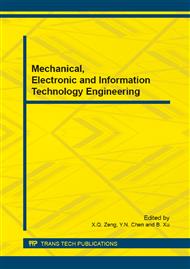p.379
p.385
p.390
p.395
p.399
p.403
p.407
p.413
p.422
A New Implementation Method of Viterbi Decoding in OFDM System Based on FPGA
Abstract:
This paper introduces the basic principle of Viterbi code in OFDM system and a new implementation method based on FPGA, on and timing circuit are validated by using of EDA tools Quartus II. The new method is that the Viterbi decoding module is improved,which makes the design of the whole decoding structure can be improved and solves the compatibility problem among the modules. Finally, the simulation results is given and demonstrates that a good Viterbi code can be achieved by using FPGA in OFDM system, which can save the cost, shorten the designing cycle , and is convenient to speed up the listing of products, occupy less hardware resources, and comply with the development trend of modern communication.
Info:
Periodical:
Pages:
399-402
Citation:
Online since:
March 2015
Authors:
Keywords:
Price:
Сopyright:
© 2015 Trans Tech Publications Ltd. All Rights Reserved
Share:
Citation:


